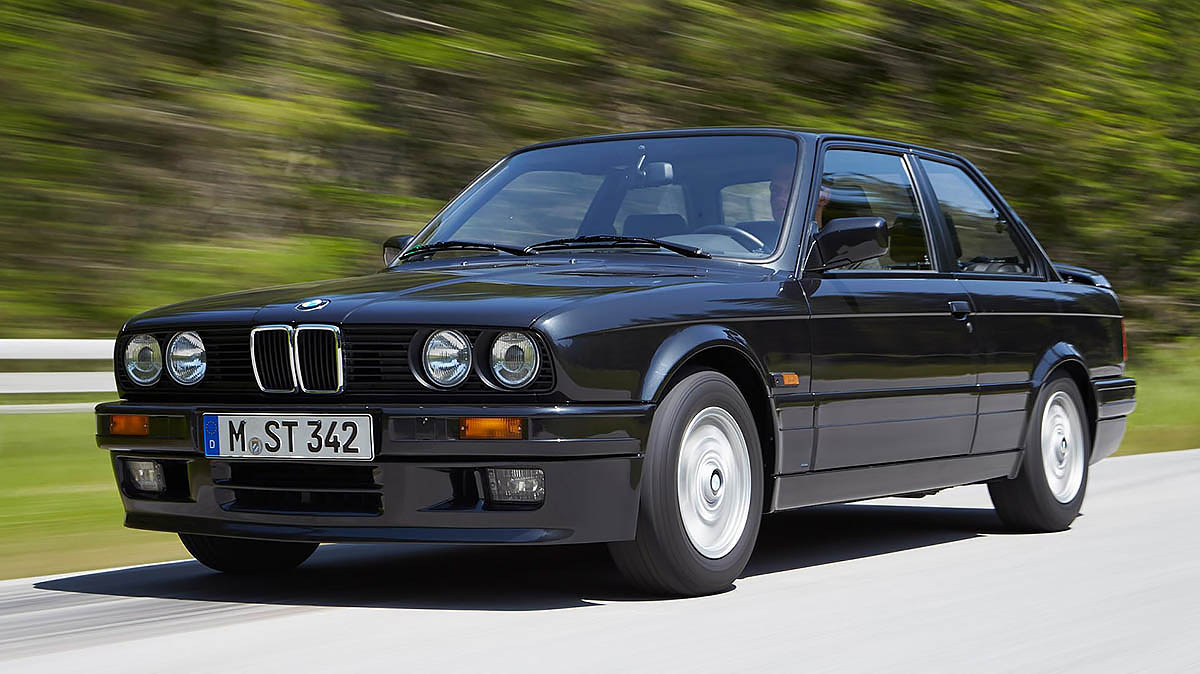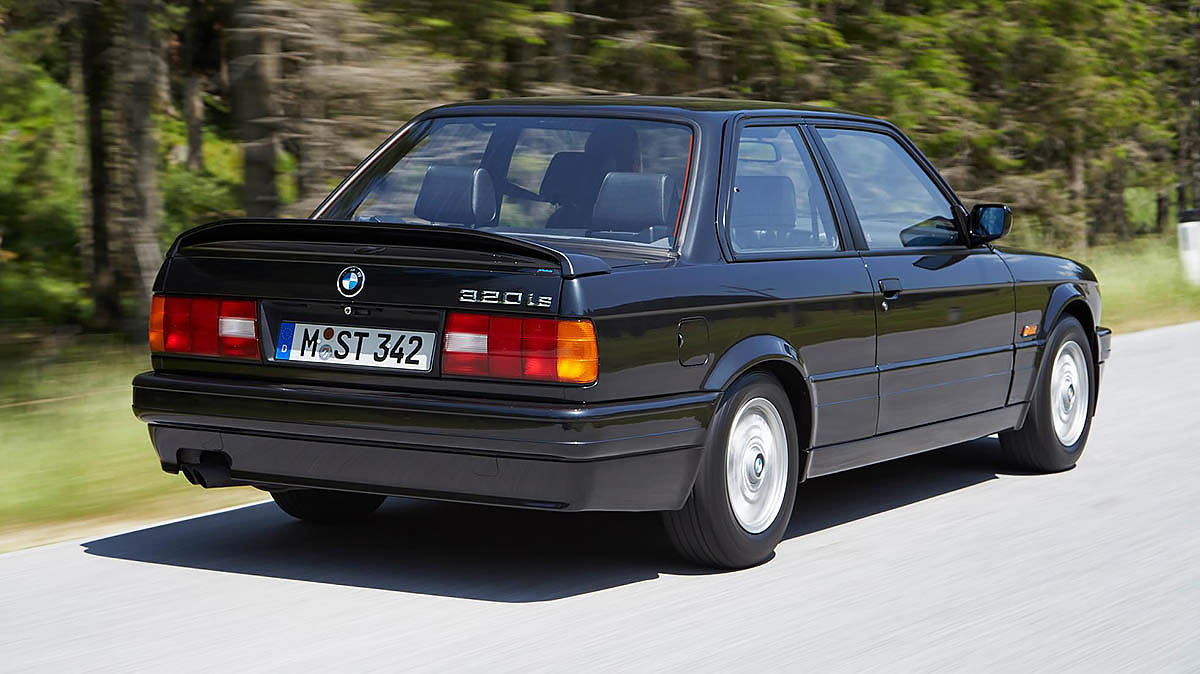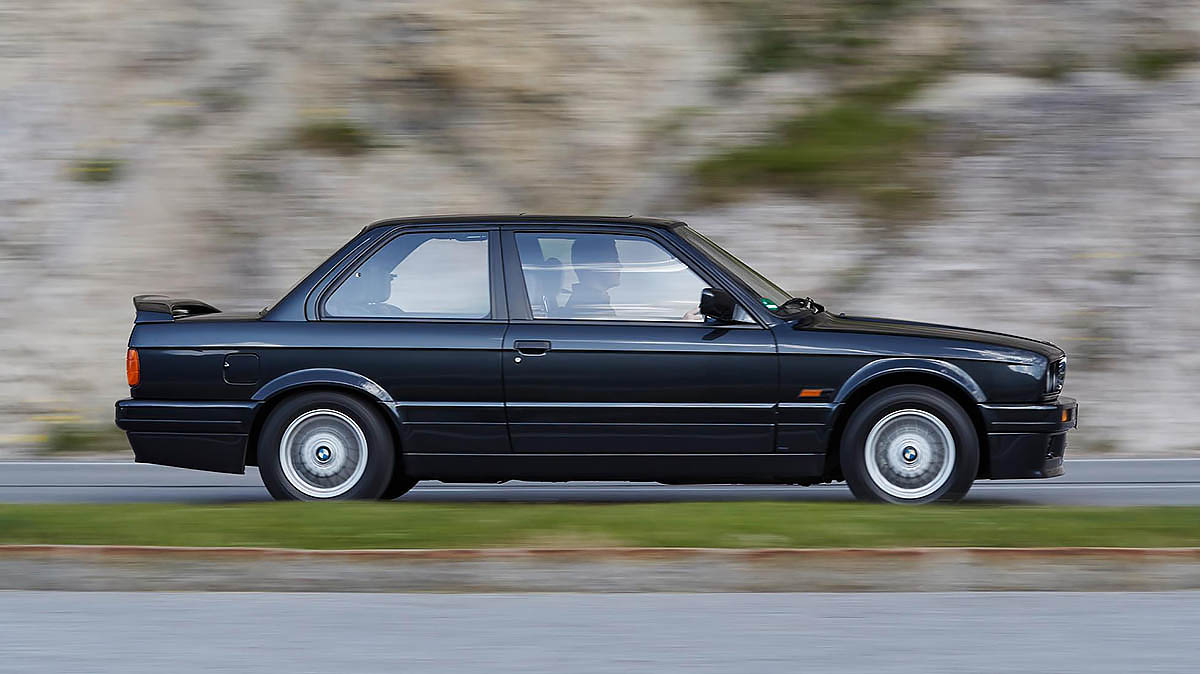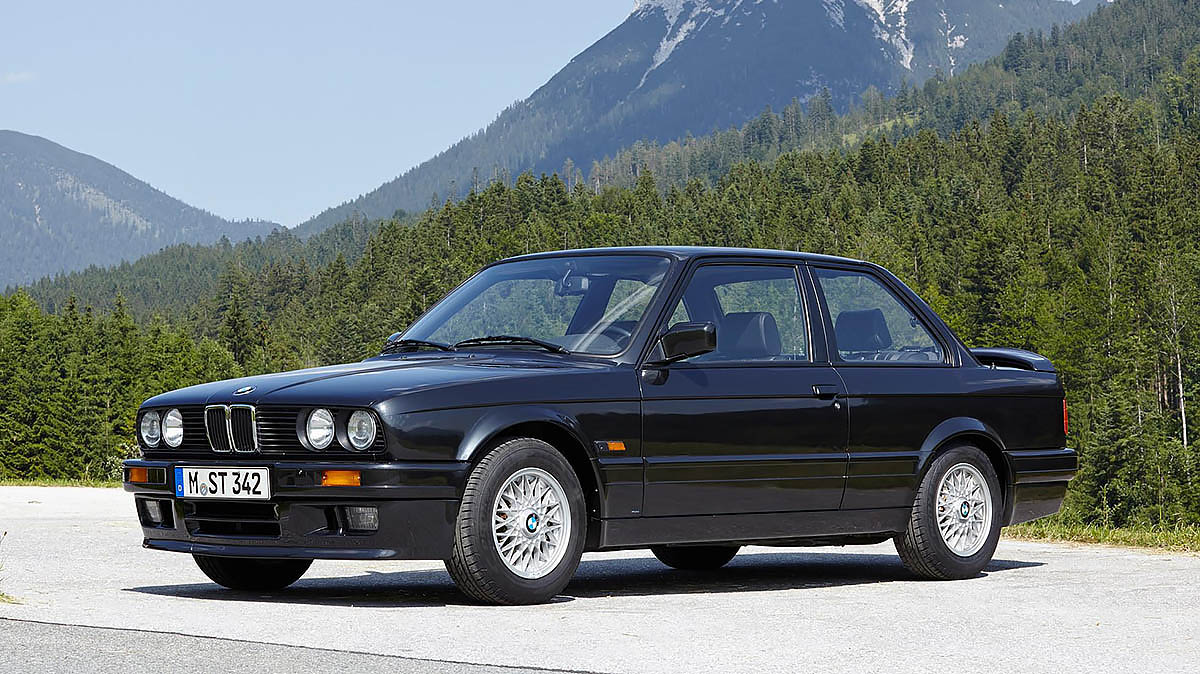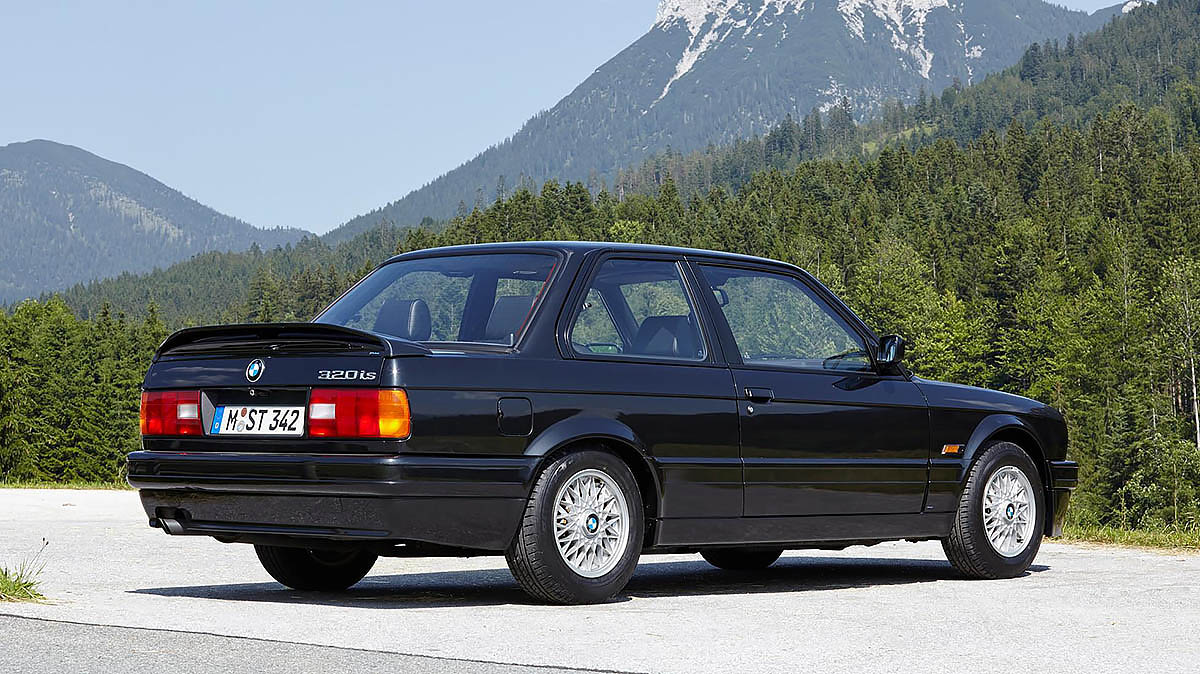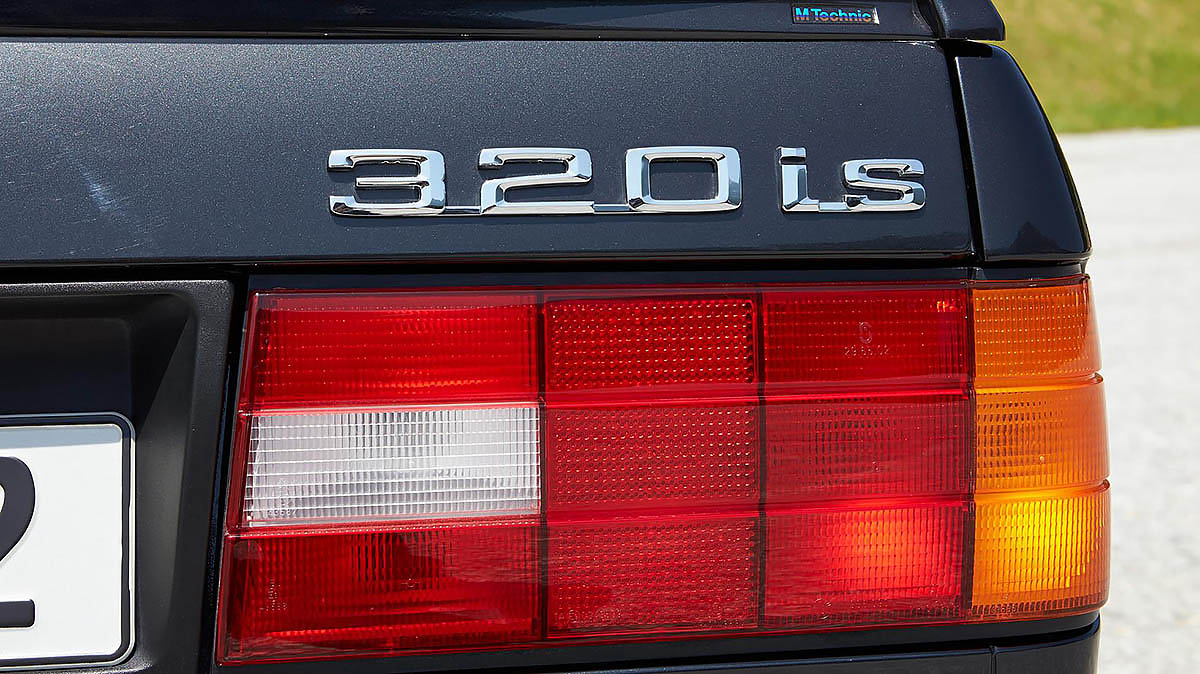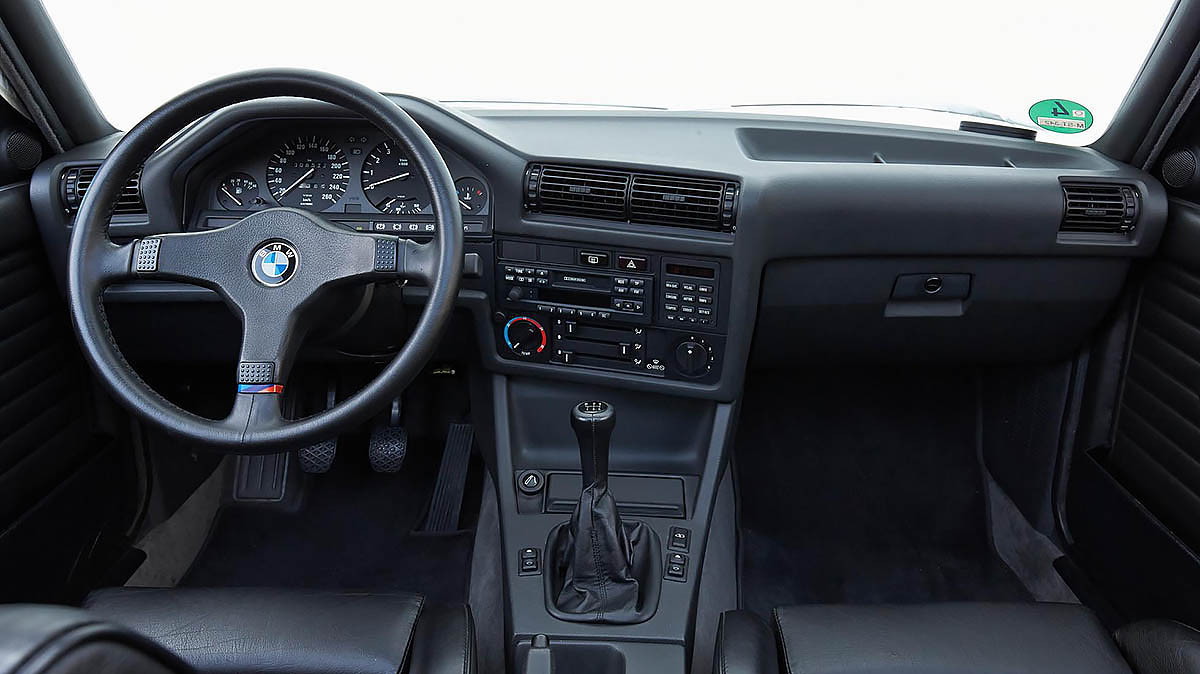Driving all the BMW 3-Series, Chapter 2: E30 (1982-1991)

Previous: driving the 1975 ‘E21’ 3-Series
E30 320iS
The next in our cavalcade shows just how much potential the 3-Series packed. The car I tested is what they called the ‘Italian M3’ – basically the M3’s twin-cam 16-valve motorsport engine taken down to 2.0-litres to save Italians paying big-engine taxes. It had the M3’s five-speed gearbox too.
But it was all installed in a regular 3-series shell rather than the M3 one, so no flared arches or lightweight glass or upright rear screen. The suspension was closer to standard too.
Inside, you’re hugged by plush leather seats, grip a leather steering wheel and face a bewildering new peppering of switchgear. BMW’s first trip computer had an individual button for each readout, and beyond that a separate ‘check control’ panel was installed up by the rear-view mirror.
What a brilliant powertrain. It makes 192bhp, which is pretty special for an elderly naturally aspirated two-litre. And it pulls like a happy puppy all the way to 7000, which means about seven-and-a-bit seconds to 97kph, on a weight of just 1200kg.
The gearshift is snicky, and there’s no excess inertia or slop or shunt anywhere in the powertrain.
Compared with the E21, the chassis is mildly firmer and better damped, but even so it’s a gentle setup. At parking speed you notice the steering is power-assisted, but once you’re moving the effect is delightfully natural.
You feel everything the tyres are doing. Against modern cars the body motions are pretty wavy, but most of the time the chassis is lovely and sorted.
Only when you pitch it into a bend while lifted do you notice the back end lolling outwards. And that was a sign that the semi-trailing arm rear suspension had reached the end of the road. BMW knew it, and so came our next 3-Series, a fresh start altogether.
- Paul Horrell
